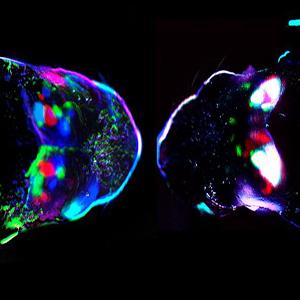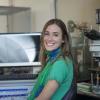Abstract
Sensory perception relies on the existence of primary sensory pathways, each of which is specialized to process a specific sensory modality. However, it is unclear whether these pathways arise directly as unimodal or whether they are initially multimodal and become specified over time. In our most recent work, we used in vivo wide-field calcium imaging to demonstrate that somatosensory and visual circuits are not by default segregated but require the earliest retinal activity to do so. In the embryo, somatosensory and visual circuits are intermingled in the superior colliculus and thus, a whisker pad stimulus leads to a cortical multimodal response, that is, a response that engages both primary somatosensory (S1) and primary visual (V1) cortices. At birth, these circuits segregate and cortical responses switch to unimodal. This segregation depends on the arrival of stage I retinal waves to the superior colliculus (SC). Indeed, transiently blocking stage I retinal waves or removing retinal projections in embryos leads to a failure in the timely developmental segregation of visual circuits in the SC. This prolongs the multimodal configuration into postnatal life, with the SC retaining a mixed somato-visual molecular identity. The extension of the multimodal window during the first days of life is enough to cause long-lasting defects in the spatial organization of the visual system. For instance, transient blockade of stage I retinal waves leads to alterations in the eye-specific segregation of retinal axons in the SC, as well as alterations in the fine-scale organization of the geniculo-cortical pathway. Hence, our results demonstrate that the superior colliculus mediates the timely segregation of sensory modalities in an input-dependent manner, channeling specific sensory cues to their appropriate sensory pathway.

Biography:
Teresa Guillamón Vivancos is a Postdoctoral researcher at the Instituto de Neurociencias de Alicante. A Fulbright scholar, she undertook her PhD at the Department of Anatomy and Neurobiology at Boston University, where she studied the contribution of the distinct precursor lineages to neuronal diversity in the neocortex.
In 2017, she joined the Lopez-Bendito lab to study the role of spontaneous activity in the development of sensory circuits. She demonstrated that somatosensory and visual circuits emerge intermingled in the mouse embryo, and that they require spontaneous activity from the perinatal retina to become independent from each other. Her current research aims to study the patterns and origin of spontaneous activity in the cortex and how it informs circuit formation in normal development and in disease.
